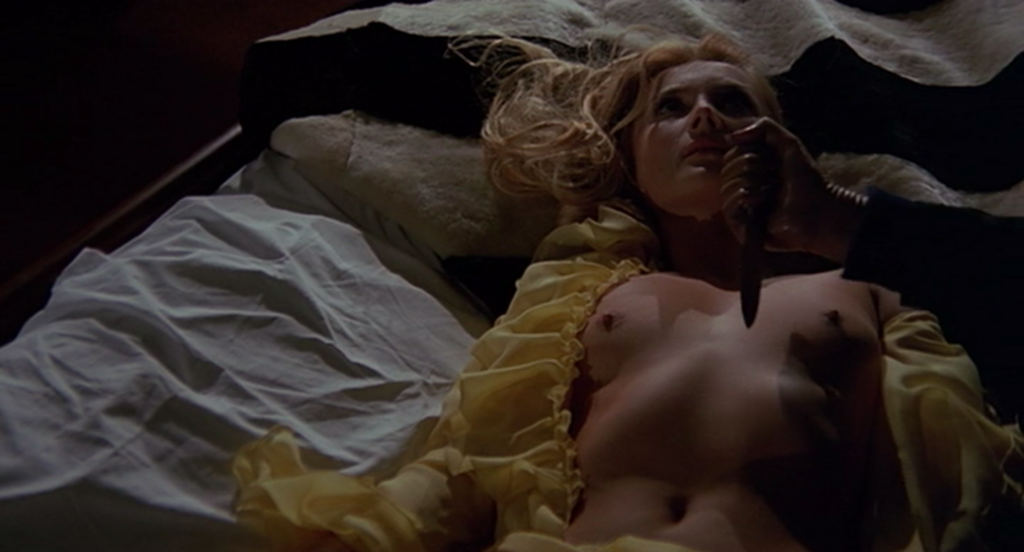
Black Belly Of The Tarantula (1971) is a misogyny fueled giallo film from director Paolo Cavara of Mondo Cane (1962) fame. While not among the luminaries of the giallo genre, Black Belly Of The Tarantula is notable for incorporating many elements from the equally popular Italian poliziotteschi films. More than most giallo films, Black Belly Of The Tarantula is a police procedural, pitting a cop against a mysterious gloved killer.
The killer’s (Ezio Marano) modus operandi is to masquerade as a blind masseur and then stab his victims in the neck with a needle to induce paralysis. While his victims remain conscious but unable to move, the killer carves up these women, achieving a sexual climax through asserting the ultimate form of dominance; homicide. The motives for the killings are a grocery list of Freudian neuroses brought on by a nagging wife and sexual impotence. Like so many giallo villains, the killer in Black Belly Of The Tarantula is never meant to exist as a character, only a catalyst for misogynist spectacles of sexual violence.
The casual misogyny of the giallo genre is manifested almost comically in a prop used in Black Belly Of The Tarantula. After being murdered in the first ten minutes of the film, Barbara Bouchet continues to haunt the rest of the film in a torn photograph in which she appears topless. Police Inspector Tellini (Giancarlo Giannini) brings the photograph everywhere with him as a piece of evidence, even enlarging it in one scene so that Bouchet’s breasts fill the entire screen. It is objectification at its most extreme. Barbara Bouchet is reduced to being a sexual object even after death.
The most compelling parts of Black Belly Of The Tarantula are those moments when the film wholly embraces Tellini’s story and giallo erupts into poliziotteschi. Director Paolo Cavara seems more at home in the kineticism of police chases and shoot outs than in the darkly sensual milieu of the giallo picture. This gives the poliziotteschi segments of the film an energy and life that is thrown into stark juxtaposition by the more lurid murders and fetishized bodies of dead women.
Those sections of Black Belly Of The Tarantula that are strictly giallo in genre orientation are devoid of cinematographic ingenuity or energy. Aesthetically, Cavara seems to be “painting by numbers” rather than throwing himself into the artistic enterprise. The killer’s gimmick of paralyzing his victims is unique enough to be worthy of visuals with more originality or at least some thought put into them. But again and again, Cavara’s gaze drifts from the macabre to the sexual, from the knife to the naked breasts.
